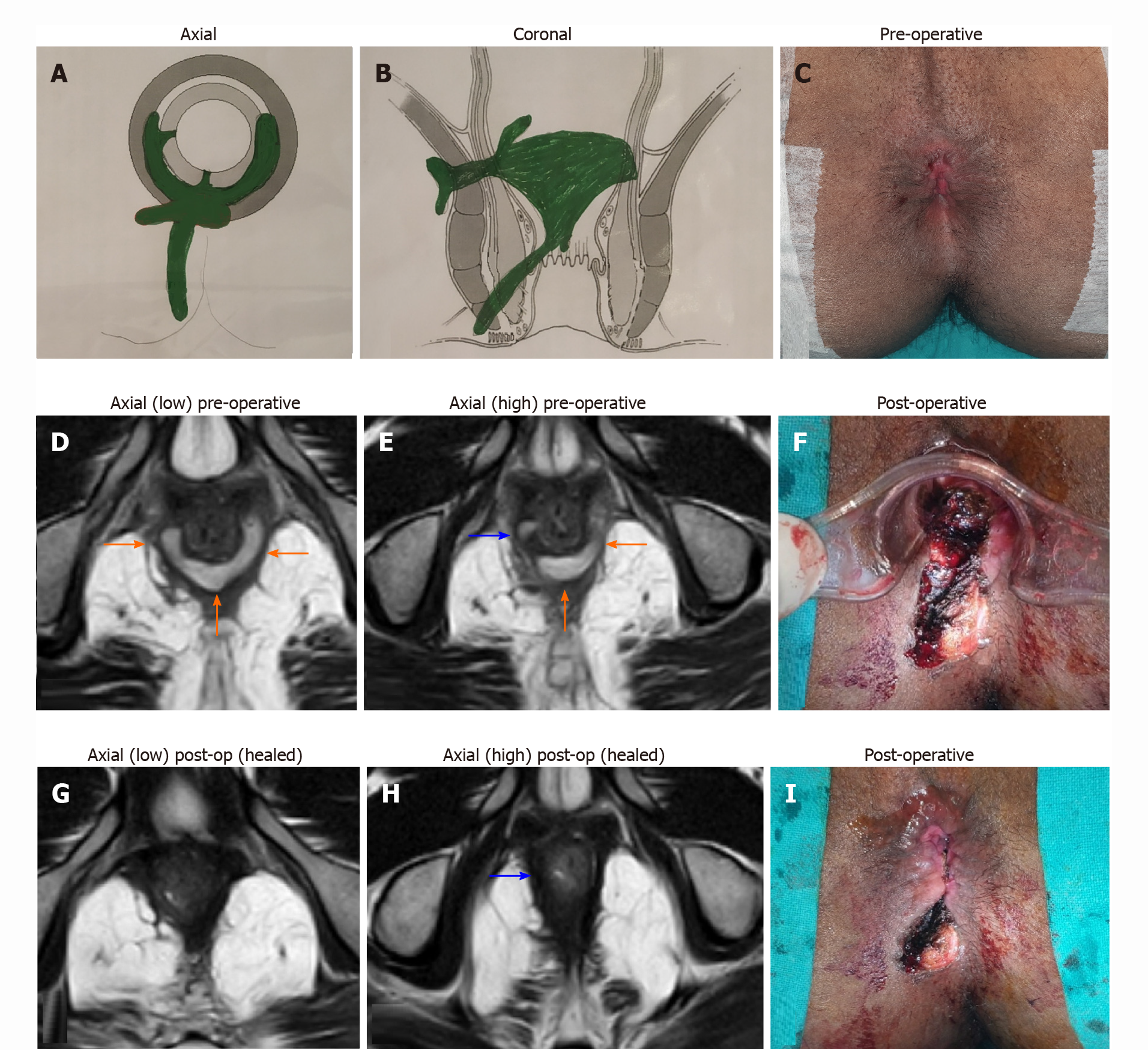Copyright
©The Author(s) 2021.
World J Gastrointest Surg. Apr 27, 2021; 13(4): 340-354
Published online Apr 27, 2021. doi: 10.4240/wjgs.v13.i4.340
Published online Apr 27, 2021. doi: 10.4240/wjgs.v13.i4.340
Figure 4 A 30-year-old male patient with a recurrent high transsphincteric horseshoe anal fistula with supralevator extension treated with transanal opening of intersphincteric space procedure.
There was no external opening. A: Axial section (Schematic diagram); B: Coronal section (Schematic diagram); C: Preoperative photograph; D: T2-weighted MRI low level axial section showing the intersphincteric horseshoe tract; E: Postoperative t2-weighted MRI high level axial section showing supralevator rectal opening at 9 o’clock (Blue arrow); F: Postoperative photograph showing the transanal opening of the intersphincteric space wound, the laid open intersphincteric portion of the fistula tract, in the anal canal; G: Postoperative T2-weighted MRI low level axial section showing healed fistula tracts 3 mo after surgery; H: Postoperative T2-weighted MRI high level axial section showing healed supralevator fistula opening 3 mo after surgery (Blue arrow), and I: Postoperative photograph showing the final picture. The low tract was laid open from the external opening at 7 o’clock and internal opening at 6 o’clock. MRI: magnetic resonance image.
- Citation: Garg P, Kaur B, Goyal A, Yagnik VD, Dawka S, Menon GR. Lessons learned from an audit of 1250 anal fistula patients operated at a single center: A retrospective review. World J Gastrointest Surg 2021; 13(4): 340-354
- URL: https://www.wjgnet.com/1948-9366/full/v13/i4/340.htm
- DOI: https://dx.doi.org/10.4240/wjgs.v13.i4.340









